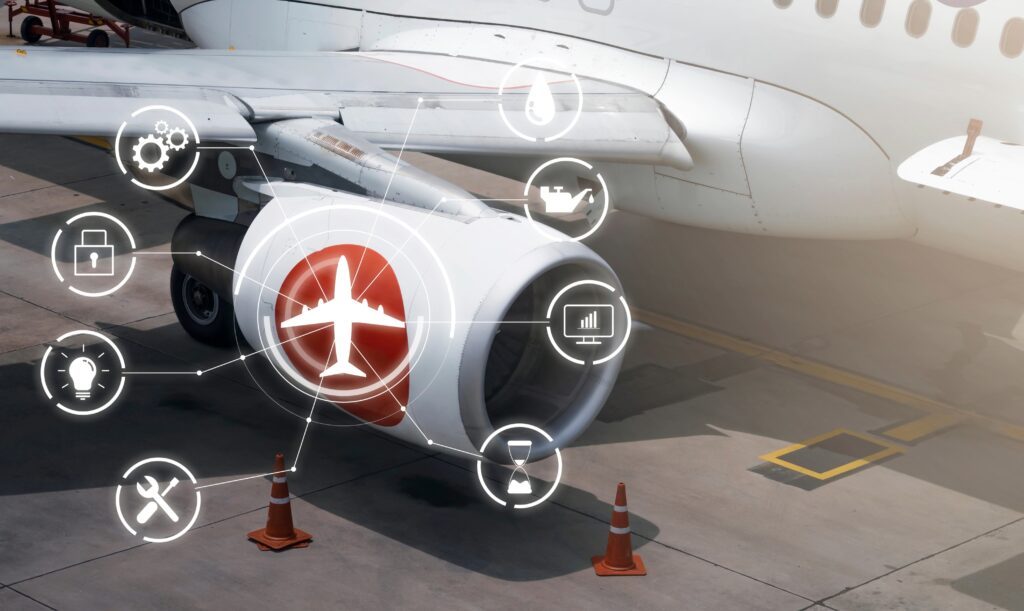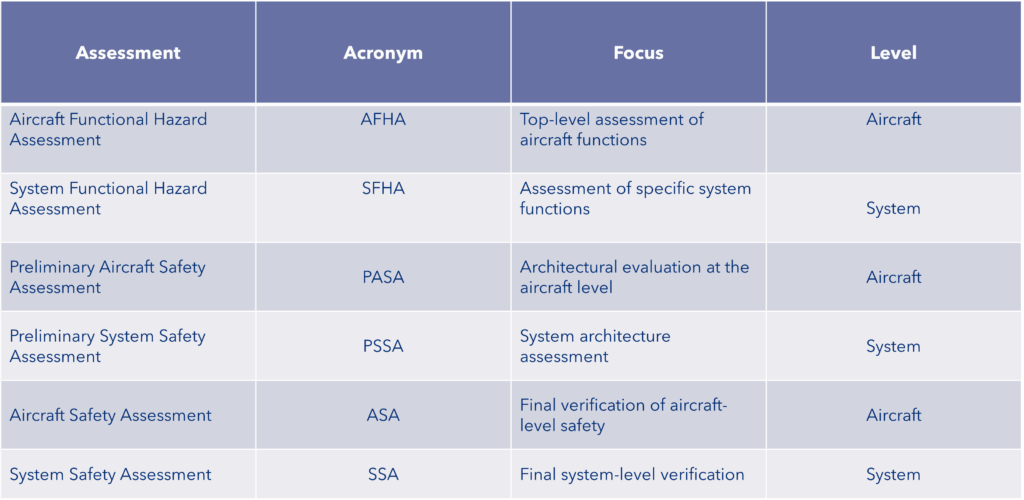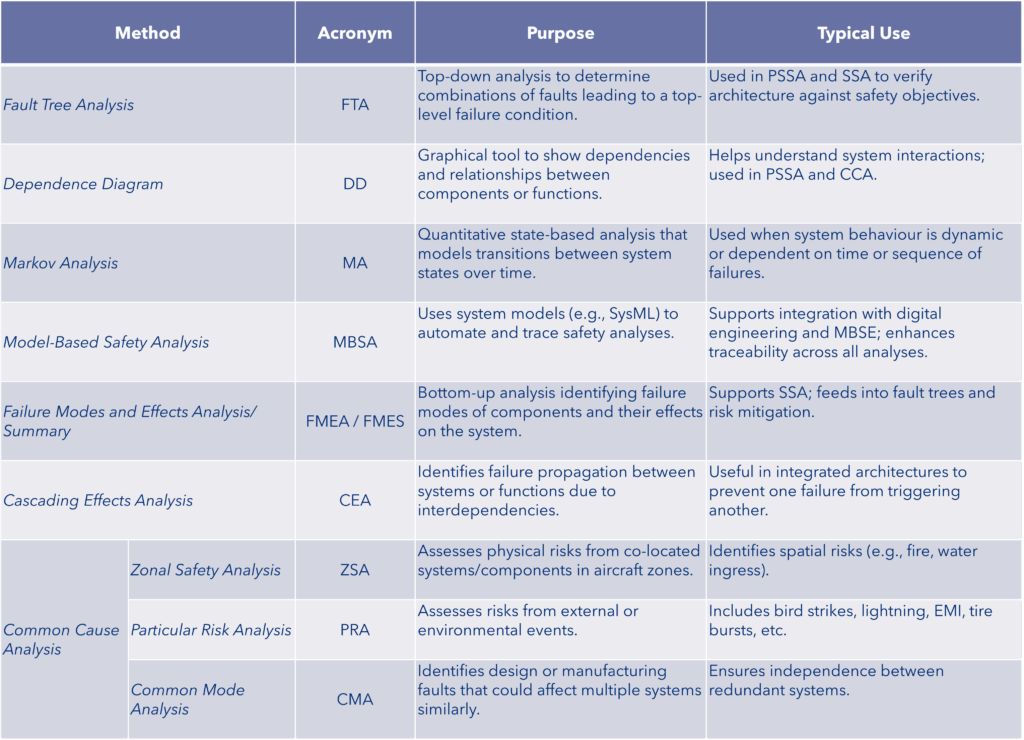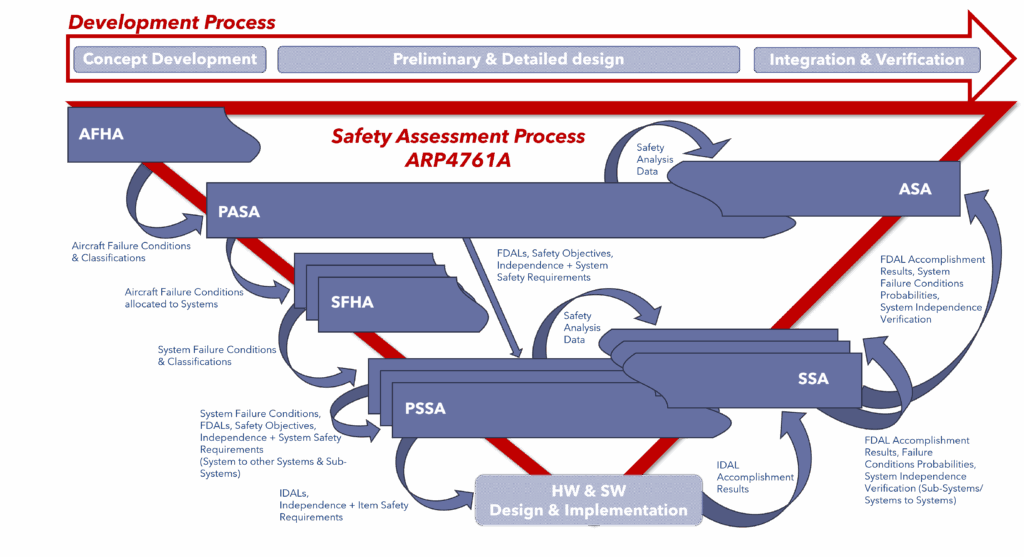High-Flying Concepts: Understanding ARP4761A and the Aviation Safety Assessment Process

In one of our previous blogs about Dependant Failure Analysis, we have opened up the topic of crossover between aviation and automotive safety processes. This time, we are taking it a step further in aviation direction, unpacking the safety assessment approach behind ARP4761A and exploring the core concepts that ensure smooth operations.
Aviation is acknowledged as one of the safest forms of transportation. This reputation is the result of decades of rigorous regulation and proactive safety management. It is committed to continuous improvement.
Every aspect of aviation is a subject to safety assessment, the primary objective of which is to uncover and evaluate potential hazards. This in turn enables the prevention of these hazards, or at least their detection and/or mitigation, ensuring the protection of aircraft, crew and passengers.
A safety assessment in aviation is a systematic scrutiny which includes:
Only by executing a comprehensive and iterative safety assessment process aligned with industry standards, we can ensure development that complies with the necessary safety–related requirement.

Two key SAE International documents lie at the heart of state-of-the-art safety assessment methodologies in aviation:
ARP4754B: Guidelines for the Development of Civil Aircraft and Systems, providing a framework for system-level development;
ARP4761A, Guidelines and Methods for Conducting the Safety Assessment Process on Civil Airborne Systems and Equipment which outlines the detailed safety assessment methods used to identify hazards, analyse risks, and verify compliance with safety objectives.
Neither document is a regulatory standard with mandatory requirements. Rather, they are recommended practices that provide guidance for safety regimens and support for the certification process of aircraft and systems under regulatory standards (such as EASA CS-25 and FAA FAR Part 25).
ARP4761, published in December 1996, defined the foundation of aircraft safety assessment and was widely used. However, aviation technology and certification practices have evolved significantly since then. ARP4761A was published by the end of 2023, designed to reflect modern aircraft systems and development approaches.

Nataša Simanić John, Functional Safety Consultant
To learn more about implementing an effective aviation safety assessment process or ensuring compliance with ARP4754B and ARP4761A, get in touch with our experts!
Learn moreThe ARP4761A guideline defines a structured process of procedures and methods for assessing the safety of aircraft, systems and equipment, as needed to showcase compliance with airworthiness regulations.
According to ARP4761A, the safety assessment process encompasses the following foundational assessment phases shown in the table below.

The listed assessment phases are interconnected, each feeding into the others and possibly triggering refining iterations. This approach makes possible that the hazards are not only identified but properly handled before the design is finalized.
In addition, the ARP4761A defines a set of safety analysis methods, which support the six phases of the safety assessment:

For mapping out the integration of safety assessment process and its analysis methods with the system development lifecycle, the V-model comes in handy. The left top-down side involves requirements and architecture tailoring, whereas the right bottom-up side is all about verification and validation of the implementation.

After covering the formal part, to wrap up, it is worth distilling the essence a bit. When exercising the safety assessment as prescribed by ARP4761A, the ultimate goal is figuring out answers to following key questions:
The publication of ARP4761A marks another step in the aviation industry’s ongoing commitment to systematic safety assurance. But a commitment to safety and continuous improvement should also be lived within every organisation. Check out our Functional Safety Culture blog to learn more!
By combining structured assessment, analytical rigour, and modern engineering methods, it ensures that every aircraft remains safe and certifiable, from concept to operation.
By Nataša Simanić John, Functional Safety Consultant
Reach out to our team at info@lorit-consultancy.com to discuss how ARP4754B and ARP4761A can strengthen your organisation’s approach to system safety assurance!